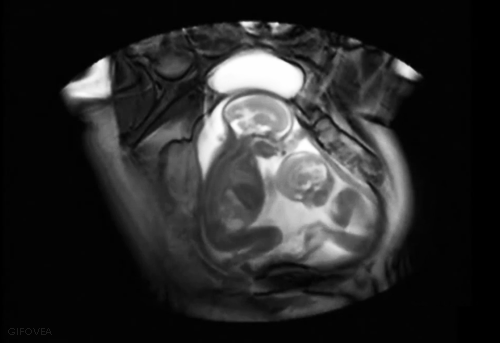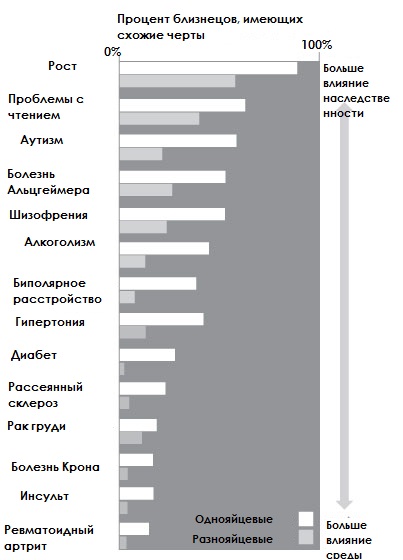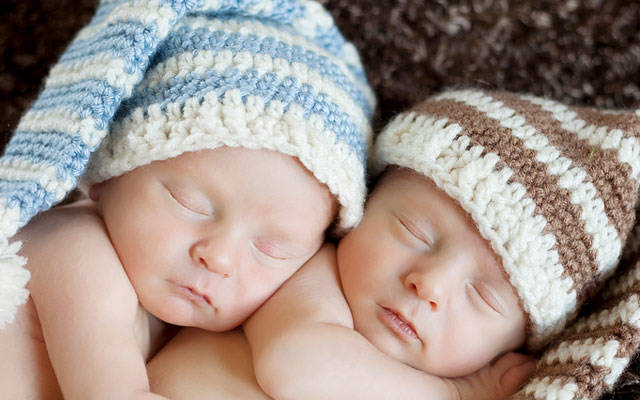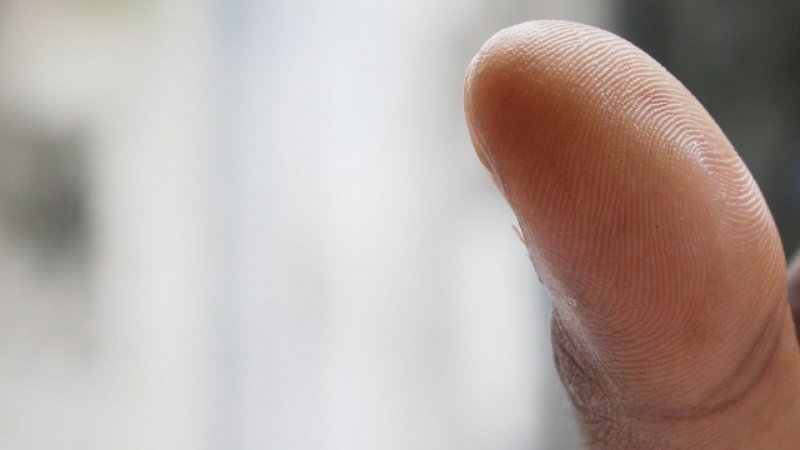Amazing facts about twins. Interesting facts about twins.
Twins can be identical or fraternal (monozygotic and dizygotic). Fraternal twins are similar to each other, like ordinary brothers and sisters, they develop from different eggs fertilized by different sperm, and can be of different sexes.
But identical twins, for some reason, develop from the same cell and have a completely identical genetic makeup. They are like two peas in a pod, not only externally, but also internally. Essentially, this is one zygote (the fusion of an egg and a sperm), which subsequently divided into two cells and gave rise to two people. It is their identity that arouses such interest.
2. Myths about twins
Since ancient times, the existence of twins seemed to man to be something supernatural. Therefore, many gods in different cultures are twins.
In legends, twins appear as founders, warriors, healers, symbolizing light, water or thunder. And among the North American Indians there was a belief that the twins were actually salmon in human form.
3. So different and so the same
Fraternal twins may even have different fathers if the woman had more than one sexual partner during ovulation and two eggs were fertilized on different days. True, only three such cases have been scientifically recorded in the history of medicine.
What's even stranger is that twins can be of different races. This situation can occur in families where the parents are mulatto.
Mulattoes have information about both white and black skin color encoded in their genes. Therefore, in very rare cases, the combination of these genes may result in one child getting “black” genes, and the other “white”. For example, like Kian and Rene. Of course, in this case we are talking about dizygotic twins.
4. Twins communicate with each other while they are still embryos.
Research conducted at the University of Padua has shown that twins communicate and interact with each other in the womb, starting at 14 weeks of gestation.
3D videos created using 4D ultrasonography showed that at 14 weeks the fetuses were reaching out to each other, and by 18 weeks they were touching each other more than touching their own bodies, and were also gesturing to each other. They spent about 30% of their time touching and stroking their twin, at the same time, they touched his delicate eye area just as carefully as they touched their own.

5. Identical, but not quite
It is surprising that identical twins, although they have the same set of genes, nevertheless have different fingerprints. The fact is that fingerprints depend on more than just DNA. At 6-13 weeks, the embryos begin to move and touch the amniotic membrane, which forms unique imprints.
You can also tell identical twins apart by their navel - it is also not determined by genetics and is therefore slightly different.
At the same time, twins smell the same, although every person on Earth (except for twins) has their own smell. Also, twins very often have the same phobias, such as fear of heights or darkness, claustrophobia or agoraphobia, and the like.
Research shows that they have an almost identical pattern of electrical activity in the brain. This may explain why one twin can often describe exactly what the other twin is thinking or feeling.
Jim Lewis and Jim Springer were adopted by different families when they were just one month old. It later turned out that there were striking coincidences in their lives: both had a dog named Toy as children, both were married twice, with their first wives named Linda and their second wives Betty. Both smoked the same cigarettes, drank the same beer and drove the same brand of car.
Science cannot yet provide a comprehensive explanation for this phenomenon.
7. Twin studies help science
Due to the same set of genes, identical twins are an ideal model for studying the influence of different factors on human health and behavior.
In studies involving twins, it is possible to clearly distinguish the influence of genetics and environment have an impact on health, in particular, to determine the influence of genetic factors on the development of diabetes, heart disease, and obesity.

8. You are my mirror
Mirror twins are identical twins similar friend at a friend like a reflection in a mirror. So, one of them is right-handed and the other is left-handed, they may have birthmarks on opposite parts of the body and the like. IN They see their mirror image on the twin's face.
About a quarter of identical twins are mirror twins.
This happens because the fertilized cell divided a week later, approximately 9-12 days after conception. If the separation occurs even later, there is a high risk that the twins will be conjoined.
9. Twins can be born on different days and be different ages.
Fraternal twins may have different gestational ages because they may have been conceived on different days. There is a known case of pregnancy of a woman with a bicornuate uterus, when in one horn the age of the fetus was 4 weeks, and in the other - 12.
There are also documented cases where twins were born almost three months apart. One of the records belongs to babies Amy and Katie, who were born 87 days apart. Amy was born premature, and while she fought for life in the incubator, Katie remained in the womb and was born at her due date.
10. Vanishing Twin Syndrome
Scientists believe that the number of twins conceived is much greater than the number of births. It’s just that very often one of the fertilized eggs or even the embryo is suddenly aborted, usually in the first trimester of pregnancy, or its tissues are absorbed by the second twin, the placenta or the uterus.
This phenomenon is called vanishing twin syndrome. The typical scenario of this syndrome is as follows. At the first ultrasound at 6-7 weeks, doctors identify two embryos and inform the mother that she is expecting twins. However, an ultrasound scan at 6 months reveals only one fetus. Sometimes the mother may even experience symptoms of miscarriage. In this case, the second child remains unharmed.
Some scientists believe that after conception one in eight people had a twin, compared with 1 in 70 at birth.
15 unexpected facts about twins!
Can twins have different biological fathers?
Every month, one egg appears in a woman’s body, which can be fertilized by one sperm. However, sometimes two eggs are produced, each of which can receive its own sperm - including two sperm from two different partners.
Can twins be of different races?
If twins' parents are of different races, their eggs and sperm contain the genetic potential for different skin colors. There are a million potential outcomes for the twins in this case. Situations where both of them bear only signs of the same race are quite rare.
There are many stories around the world about twins who, for one reason or another, were separated in childhood, but nevertheless, the life of one of them was practically a reflection of the life of the other. Sometimes these similarities go beyond mere coincidence - for example, marriages with women who have the same name, the same names they give to their children, the same professions and even simultaneous illnesses.
Cousins born of twins are genetically related

If male identical twins and female identical twins decide to have children, legally the children of both couples will be first cousins, but genetically indistinguishable from siblings
Since the genetic makeup of identical twins is identical, if two pairs of identical twins have children, their children will have the same genetic makeup as their cousins.
Having twins prolongs life
It is believed that a woman who gives birth to twins is generally healthier than women who do not, since twins are an evolutionary trick in an attempt to reproduce the healthy mother's set of genes twice in one pregnancy.
Who is more likely to have twins?

Tall women are more likely to have twins. Countries where women are taller than average also have high rates of twin births. Tall people have a higher concentration of growth hormone; In women, growth hormone increases the likelihood of conceiving twins.
Women who eat a lot of dairy products are also more likely to have twins.
Women who eat a lot of animals, including dairy products, are five times more likely to conceive twins than others.
If a woman is a Gemini herself, then she is more likely to give birth to twins
This likelihood also increases if she already has twin children or siblings who are twins.
Twins begin to interact in the womb
According to an Italian study, twins start touching each other as early as 14 weeks. By 18 weeks, they touch their twin more than themselves. Interestingly, they are quite gentle with each other.
"Mirror Twins"

Geminis can be mirror images of each other. Then they are called "mirror twins." About a quarter of twins interact in the womb upside down and become literally reflections of each other. One of them becomes left-handed, the other becomes right-handed; moles and birthmarks also appear in a mirror order.
Geminis can read each other's minds
Some conjoined twins can see through each other's eyes and read each other's minds. Some twins conjoined at the head are fused in the thalamus region. The thalamus is the part of the brain that controls sensations and muscle responses. As a result, one conjoined twin can see through the other's eyes, read the other's mind, and feel what the other feels.
A woman's body can adapt to twins

If a mother is breastfeeding two twins, her breasts regulate the temperature of the milk individually for each of the children.
How to distinguish between twins?
Looking at the navel is the easiest way to tell twins apart. Belly buttons are not genetically determined, they are scars left by the tying of the umbilical cord. Each belly button is slightly different from the others.
Twins' fingerprints
Even identical twins have different fingerprints

This happens despite having the same DNA because our fingerprints are formed when we touch the amniotic sac as fetuses. Its unique shape determines what your baby's fingerprints will look like.
Gemini is left-handed
Twins are twice as likely to be left-handed as the average person
Twins can be born a few months apart
Due to various complications, such as premature rupture amniotic fluid, sometimes the birth of twins can be separated by weeks or even months. The registered record for such a difference is 87 days, that is, almost three months!
Identical twins may become elusive criminals
Because their DNA is 99.9% similar, experts can spend a lot of time figuring out who is exactly to blame if both deny guilt. Thus, both of them can remain free as long as possible during the investigation.
Incredible facts
They are often difficult to distinguish from each other, and they can use this fact to deceive parents, teachers, and romantic partners. However, beyond these pranks, twins can tell us a lot about human nature.
They don't always look alike, and often look like ordinary siblings.
What else interesting do we know about them?
 This includes feeding from two bottles, and twice as many dirty diapers, and the noise level is doubled, that is, the mother of twins experiences double the load and double responsibility. It turns out that mothers of twins live longer, according to a recent study published in the journal Proceedings of the Royal Society. But this is not because they have double duty. Rather, they are physically stronger. Thus, having twins may be an evolutionary adaptation in which healthy mothers take advantage of the opportunity to pass on twice as many of their genes in a single birth.
This includes feeding from two bottles, and twice as many dirty diapers, and the noise level is doubled, that is, the mother of twins experiences double the load and double responsibility. It turns out that mothers of twins live longer, according to a recent study published in the journal Proceedings of the Royal Society. But this is not because they have double duty. Rather, they are physically stronger. Thus, having twins may be an evolutionary adaptation in which healthy mothers take advantage of the opportunity to pass on twice as many of their genes in a single birth.
Since the study focused on studying women who naturally become mothers of twins, the results may not apply to women who give birth to twins using in vitro fertilization.
They are easily distinguished by dogs
 Close friends and even parents can sometimes be fooled identical twins, which impersonate each other, however, in the case of some dogs this number does not work.
Close friends and even parents can sometimes be fooled identical twins, which impersonate each other, however, in the case of some dogs this number does not work.
Past studies assessing dogs' ability to tell twins apart have been inconclusive, with conflicting results reported over the years. Scientists from the Czech Republic say that the discrepancies between the results are due to the different levels of training of the dogs used in each of these studies. Therefore, in their experiment, they used 10 “highly trained” bloodhound dogs (German shepherds), who passed 12 tests to identify differences in smell between identical and identical dogs. fraternal twins. All dogs successfully completed the task, always correctly identifying the desired smell.
Researchers are not sure what exactly dogs use to identify twins; perhaps it is some kind of infection or other external factors that affect the change in a person's smell.
Do you want twins?
 It turns out that there are factors that increase a woman's chances of conceiving and having twins. Tallness is one such factor. Past research has shown that tall women have more insulin-like growth factor, which is responsible not only for height but also for the likelihood of having twins. In a 2006 paper published in the Journal of Reproductive Medicine, Dr. Gary Steinman compared the heights of 125 women who gave birth to twins and 24 women who gave birth to triplets with the average height of American women.
It turns out that there are factors that increase a woman's chances of conceiving and having twins. Tallness is one such factor. Past research has shown that tall women have more insulin-like growth factor, which is responsible not only for height but also for the likelihood of having twins. In a 2006 paper published in the Journal of Reproductive Medicine, Dr. Gary Steinman compared the heights of 125 women who gave birth to twins and 24 women who gave birth to triplets with the average height of American women.
Ultimately, he concluded that those who gave birth to two or more children at the same time were, on average, an inch taller than other mothers. Also, the probability of conceiving twins is influenced by the woman’s age: the older she is, the higher the possibility. It has been found that the body of a woman over 35 years old contains more follicle-stimulating hormone, so during menstrual cycle they are more likely to produce 2-3 eggs.
Different fingerprints
 Instead of focusing on a facial feature or clothing item when trying to tell twins apart, look at their fingerprints: they are different. This is because genes don't tell the "whole story" about the skin that covers our hands; rather, these lines are randomly formed in the womb.
Instead of focusing on a facial feature or clothing item when trying to tell twins apart, look at their fingerprints: they are different. This is because genes don't tell the "whole story" about the skin that covers our hands; rather, these lines are randomly formed in the womb.
Twin Birth Rate
 The phrase "I see double" takes on new meaning in the central African country of Benin. There, an average of 27.9 twins are born for every 1,000 births - the highest national average twin birth rate. In Asia and Latin America, this figure is the lowest - only 8 twins per 1000 births.
The phrase "I see double" takes on new meaning in the central African country of Benin. There, an average of 27.9 twins are born for every 1,000 births - the highest national average twin birth rate. In Asia and Latin America, this figure is the lowest - only 8 twins per 1000 births.
While scientists aren't sure what accounts for the difference in twin birth rates in different regions around the world, they suspect that much of the variation is due to twin birth rates. Identical twins are born at a remarkably constant rate globally, with an average of 3.5 to 4 twins born for every 1,000 births. Various factors influence the birth rate of twins, including the mother's age, her height, whether she is a smoker, whether she has inherited the gene, etc.
Twins and twins
 Identical twins not only look alike, their genomes are 99.9 percent similar. This makes them a desirable target for scientific research that studies the effects of genetic and environmental factors. For example, by comparing the aging processes of monozygotic twins and twins, whose genomes are as similar as normal siblings and who tend to grow up in the same environment, Minnesota researchers have begun to understand the reasons for individual differences in the aging process. Since the study began back in 1986, they have found that our genes influence the changes that happen to our personality, as well as our activity levels, meaning those who lead an active lifestyle age slower.
Identical twins not only look alike, their genomes are 99.9 percent similar. This makes them a desirable target for scientific research that studies the effects of genetic and environmental factors. For example, by comparing the aging processes of monozygotic twins and twins, whose genomes are as similar as normal siblings and who tend to grow up in the same environment, Minnesota researchers have begun to understand the reasons for individual differences in the aging process. Since the study began back in 1986, they have found that our genes influence the changes that happen to our personality, as well as our activity levels, meaning those who lead an active lifestyle age slower.
Built to be social
![]() Geminis are truly never alone, even in the womb. Recent studies have shown that as early as 14 weeks of pregnancy, twins begin to interact with each other. Specialist Umberto Castiello from the University of Padua in Italy and his colleagues studied movements in the womb of five pairs of twins using four-dimensional ultrasound at 14 and 18 weeks of pregnancy. As a result, at week 14 the twins were already making movements towards each other, and at week 18 they became even more active.
Geminis are truly never alone, even in the womb. Recent studies have shown that as early as 14 weeks of pregnancy, twins begin to interact with each other. Specialist Umberto Castiello from the University of Padua in Italy and his colleagues studied movements in the womb of five pairs of twins using four-dimensional ultrasound at 14 and 18 weeks of pregnancy. As a result, at week 14 the twins were already making movements towards each other, and at week 18 they became even more active.
For example, in one of the videos you can clearly see how one of the twins is “stroking” the other. While the number of self-directed movements, such as hand to mouth or hand to eye, decreased, the number of self-directed movements increased by 29 percent between 14 and 18 weeks of pregnancy.
“The findings suggest that twins become social in utero because they engage in more actions directed at each other than they do toward themselves,” the researchers wrote.
Is the gene passed on through generations?
 Scientists have yet to find the genes that cause a fertilized egg to split into two parts, resulting in monozygotic twins. However, the double problem is that, according to many experts, this is a random phenomenon. So if you think that because your mom has a twin sister, you have no chance of having twins, think again.
Scientists have yet to find the genes that cause a fertilized egg to split into two parts, resulting in monozygotic twins. However, the double problem is that, according to many experts, this is a random phenomenon. So if you think that because your mom has a twin sister, you have no chance of having twins, think again.
Research shows that heredity is responsible for a woman's ability to produce more than one egg in one cycle. At the same time, the generally accepted point of view that twins are born every generation does not always justify itself. This may be because men who inherit the “twin gene” are not affected by it in any way, but they can pass it on to their daughter, who will be much more likely to conceive and give birth to twins in the future.
Do you know twins? Or were they born into your family? Do you know how to tell them apart? Here are the facts you need to remember about these amazing children.
The navel is a scar from the umbilical cord being severed after birth, so it has nothing to do with genetics. Another way to determine who is who is to take fingerprints. Identical twins may share DNA, but they were in different areas of the uterus during development, and this affected the lines on their fingertips. 
Twins can have two different fathers
Heteropaternal superfecundation occurs when a woman has sex with more than one man during ovulation. Sperm from each man fertilizes an egg, resulting in twins. Although this phenomenon is common in dogs and cats, it is very rare in humans. 
The chance of having twins is much higher than it was 30 years ago
The birth rate of twins has increased by 76% since 1980. Some experts attribute this surge to the fact that older women who have previously had children are now giving birth more often (women in their 30s are more likely to have twins than those in their 20s).  Or maybe it's because women are getting taller? Long Island European Researchers medical center found that women who gave birth to twins were several centimeters taller than those who had only one child at a time.
Or maybe it's because women are getting taller? Long Island European Researchers medical center found that women who gave birth to twins were several centimeters taller than those who had only one child at a time. 
Embryos that separate in the uterus are not necessarily twins on the day they are born.
Superfetation is an extremely rare phenomenon during which a pregnant woman continues to menstruate, and then a second embryo develops as a result of fertilization. Often this second fetus is born prematurely, while the first is born on time. But in some cases, children are born on the same day. 
Geminis speak their own language
What sounds like baby talk may actually be cryptophasia. It is a language developed between twins that only they can understand. A study published in the Journal of the Institute of General Linguistics found that twin infants often use each other to build their vocabulary. Researchers estimate that about 40% of twins create their own language. 
Some twins are mirror images of each other
When a fertilized egg divides later than usual, identical twins are created, which are mirror images of each other. For example, one twin may have a mole on his right arm, while the other will have one on his left. Or one twin may be left-handed while the other is right-handed. In special cases, such twins may have mirrored internal organs, for example, the heart on the right and the liver on the left. 
Twins help mom live longer
Researchers from the University of Utah, USA, studied birth and death records made between the 1800s and 1970s. They found that women who give birth to twins tend to live longer. 
Twins connected in the womb
They begin to interact in the womb as early as 14 weeks of pregnancy!




